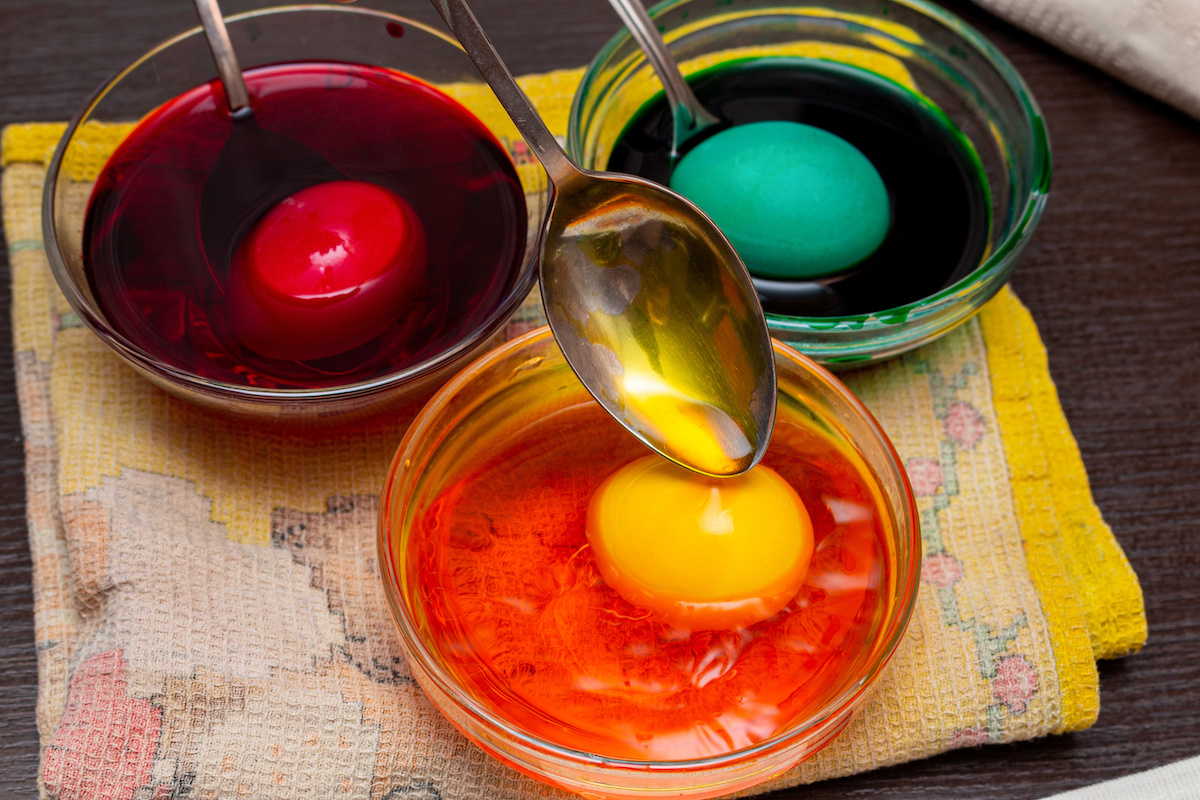
With Easter approaching, many of us will be participating in the time-honored tradition
of dying Easter eggs (evolved from the early practice of staining eggs red in remembrance of Christ’s blood) and consuming brightly colored Easter candy.
Our brains are hardwired to recognize brightly colored foods as healthy. This is certainly true in nature but not necessarily in the lab.
Let’s take a look at the latest data on food dyes and their potential effects on our health and well-being.
Red, Yellow, Blue
We have known for years that certain food dyes, such as petroleum-based additives like Red 3, Yellow 5, and Blue 2, are linked to hyperactivity, ADHD, and other neurological problems in some children. The most comprehensive study to date was released in 2021 by the California Protection Agency’s Office of Environmental Health Hazard Assessment, and it reinforced these findings.
 The Center for Science in the Public Interest (CPSI) has been fighting for decades to get the FDA to ban synthetic food dyes that pose health risks. Food dyes, unlike many additives, do not keep food from spoiling or fend off bacteria. They mostly help food companies make food, especially junk foods like sugary drinks, candy, cereal, and snacks more appealing to children and even trick our adult brains into thinking that some foods look healthy due to the bright colors resembling healthy vegetables and fruits. (Think artificially colored bagged veggie sticks, granola, and brightly colored vitamin water).
The Center for Science in the Public Interest (CPSI) has been fighting for decades to get the FDA to ban synthetic food dyes that pose health risks. Food dyes, unlike many additives, do not keep food from spoiling or fend off bacteria. They mostly help food companies make food, especially junk foods like sugary drinks, candy, cereal, and snacks more appealing to children and even trick our adult brains into thinking that some foods look healthy due to the bright colors resembling healthy vegetables and fruits. (Think artificially colored bagged veggie sticks, granola, and brightly colored vitamin water).
With no real benefit to consumers, why is any level of risk from food dyes acceptable?
Red 3, for example, which has been banned by the FDA since 1990 for use in cosmetics and topical drugs, has been proven to cause cancer in lab animals since the 1980s. The FDA stated in 1990 that it would take steps to begin banning Red 3 in foods, but 30 years later, it is still present in lots of candies and baked goods, as well as supplements, vitamins, and medications.
Other non-petroleum-based dyes, such as titanium dioxide, were recently banned in the European Union. It adds a bright white color to coffee creamers, baked goods, chewing gums, frostings, sauces, and more. The tiny nanoparticles in so-called food-grade titanium dioxide may accumulate in the body and cause DNA damage – one way that chemicals cause cancer.
What to do?
With a heavy heart, I just removed the brightly colored Yellow #5 and Red #3 containing Peeps from my niece’s Easter basket. But here is some good news. CSPI’s online guide, Chemical Cuisine Ratings, contains information about which additives they have rated as “safe,” which earn a “caution,” “cut back,” or “avoid.”
And I found a recipe on allrecipes.com for lemon bar peeps!
Perhaps, this year, I will start a tradition of baking peeps and naturally dying some eggs with my little niece. I found some great tips on thekitchen.com.
Have a blessed and healthy Easter season!
Tracy Backer is a Registered Nurse with 39 years in the medical field specializing in critical care nursing. Her health columns appear regularly on Now Habersham. She may be reached at [email protected]. For more health-related content, click here.








